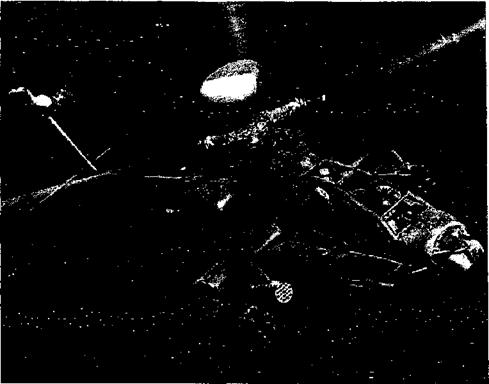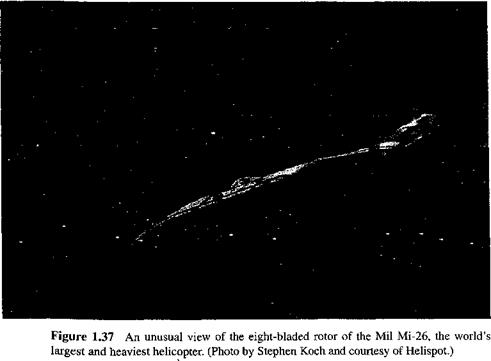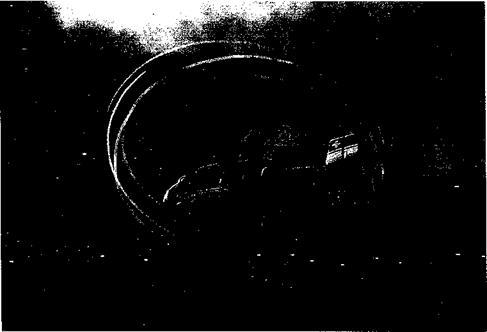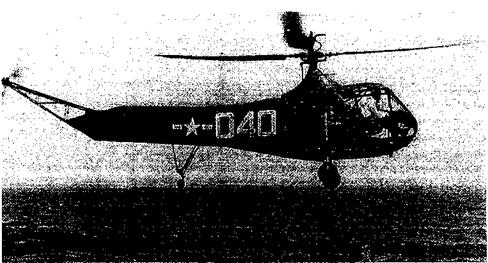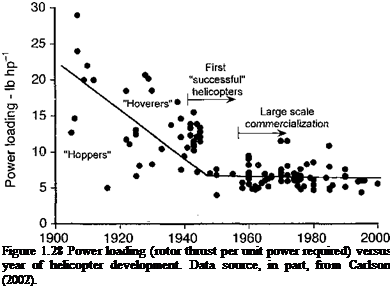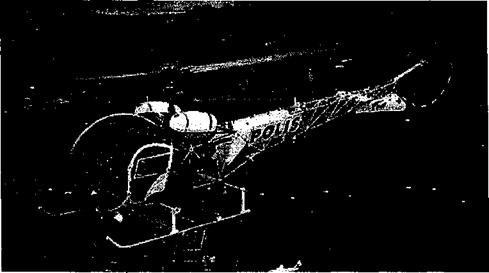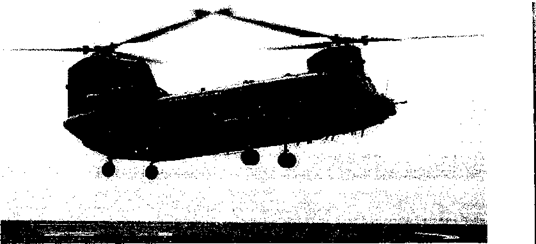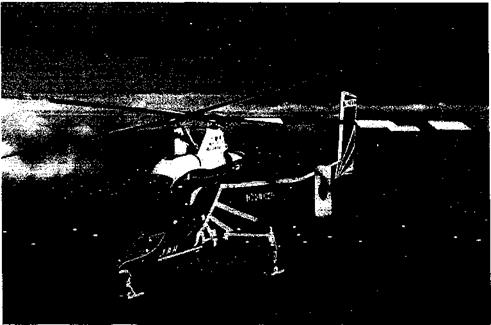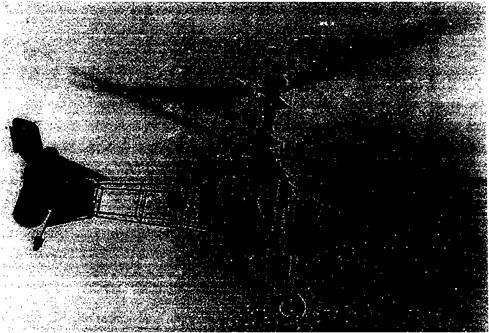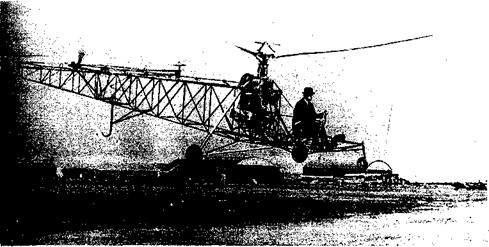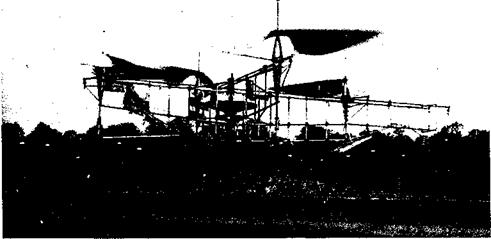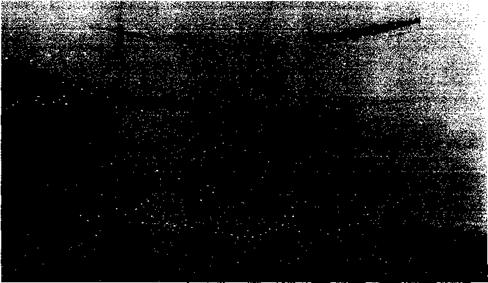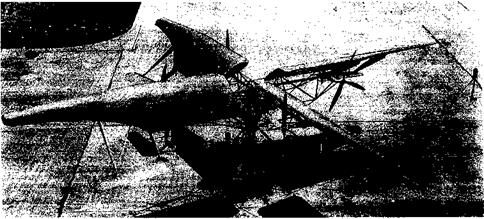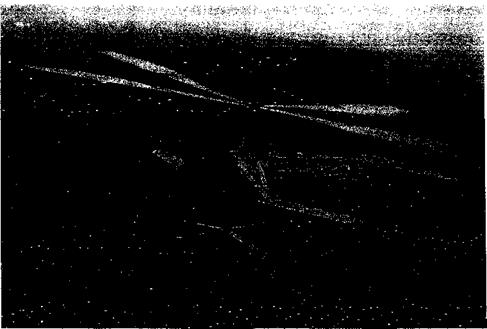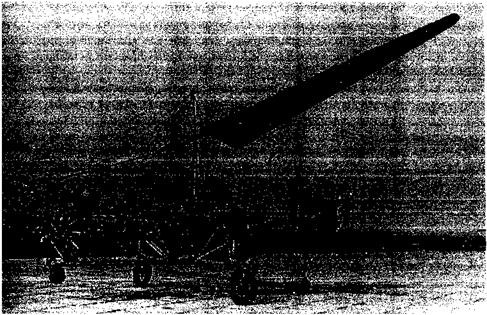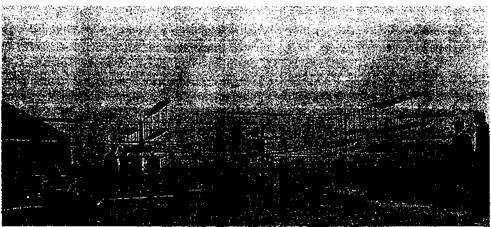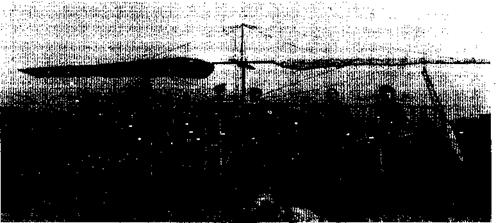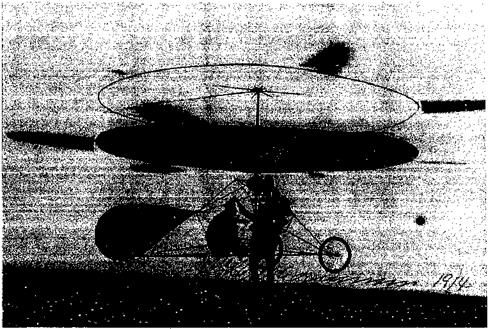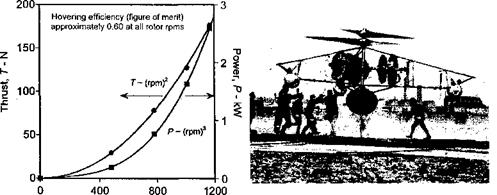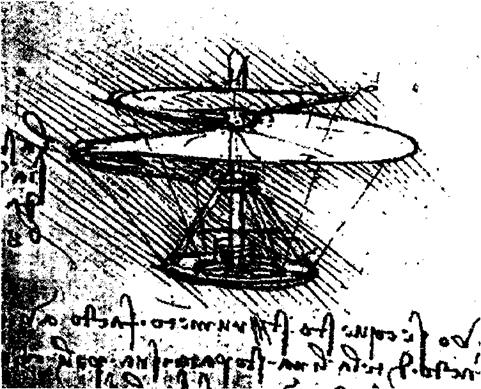Maturing Technology
The early 1950s saw helicopters quickly maturing into safe, successful, and viable aircraft that were easier to fly and more comfortable for crew and passengers alike. This era is marked by significant mass production of helicopters by various manufacturers in the United States, Britain, France, and elsewhere. There were rapid strides in the development of turboshaft engines (Fig. 1.17), with continuous improvements in power output and specific fuel consumption, low weight and high mechanical reliability. This was also accompanied by reductions in the net cost of an engine per unit of power output. Thereafter, the helicopter was to become a wide-scale commercial success.
|
Figure 1.33 The Sikorsky S-55 was quantum-leap in terms of flight performance and payload capability for a single rotor helicopter. (Photo courtesy of Sikorsky Aircraft.) |
The Sikorsky S-55 (see Fig. 1.33) and the S-58 models made great advances in helicopter design. These aircraft sported a large cabin under the rotor and to give a wide allowable center of gravity position, the engine was placed in the nose. Westland also maintained their relationship with Sikorsky and built versions called the S-55 Whirlwind and S-58 Wessex. The 1960s saw the development of the Sikorsky S-61 Sea King, the HH-52 (S-62), the heavy-lift S-64 Sky Crane and the larger five – and seven-bladed CH-53 models. The HH-52 (S-62) is arguably one of the greatest lifesaving aircraft ever created – see Beard (1996). Later, the S-70 (UH-60) Blackhawk was to become the mainstay of the Sikorsky company and the machine is expected to remain in production well into the twenty-first century. The civilian S-76 has been successful in its role as an executive transport and air ambulance, amongst other roles. In the 1970s, Sikorsky and Boeing teamed to build the military RAH-66 Comanche (Fig. 1.34). While producing one of the most advanced combat helicopters ever built, this program was cancelled by the Pentagon in 2004. The latest Sikorsky machine, the civilian medium lift S-92 flew for the first time in 1998 and was certified in 2002. In 2005, Sikorsky proposed a series of coaxial rotor helicopters, ranging from small unmanned velicles to heavy-lifters. For more information, see Sikorsky Aircraft (2005).
The success with the Model-47 led Bell Helicopter to develop the UH-1 Huey, which was delivered starting in 1959. The Bell 212 was a two-engine development of the UH-1D and proved to be a successful military and civilian machine. The Huey-Cobra also grew out of the UH-1 series, retaining the same rotor components but having a more streamlined fuselage with the crew seated in tandem. First flown in 1966, the type was in production in 1999 as the AH-1W Super-Cobra, which uses an advanced composite four-bladed rotor. The “Z” model is the current state of the art. The Bell 412 is basically a 212 model, but with a four-bladed composite rotor replacing the two-bladed teetering rotor. Bell led the civilian market with its Model 206 Jet-Ranger and variants, which first flew in 1966 and has become one of the most widely used helicopters. The OH-58 military version was sold in considerable numbers and with sustained performance improvements over the years,
with the OH-58D having an advanced four-bladed rotor with a mast-mounted sight. One of most recent civil variants is the Bell 427, which is an eight-place light twin. See also Bell Helicopter Textron (2005).
Hughes Aircraft built the military TH-55 and later the Hughes 500 series, which has seen extensive civilian use in various models. However, the AH-64 Apache, which was designed in 1976, proved to be the biggest success story for the Hughes company, which became part of McDonnell-Douglas in 1984 and finally part of Boeing in the late 1990s. The AH-64D Longbow model (Fig. 1.35) is still in production. It was also produced under license in Britain by Agusta-Westland, with sixty-seven helicopters being delivered to the British Army by 2004. McDonnell-Douglas have produced a line of light commercial helicopters including the MD 500 and 600 series, and most recently have marketed the MD 900 Explorer. This aircraft uses a new bearingless rotor design and the “No Tail Rotor” (NOTAR) circulation control anti-torque concept (see Section 6.10.2). In 1999 Boeing sold the commercial helicopter line to MD Helicopters, a subsidiary of a European company.

 |
Although most medium – and heavy-lift helicopters are produced for the military, the civil market still has a substantial market share. Several manufacturers produce training and light – utility helicopters or helicopters aimed at the general aviation market, including Robinson, Schweizer, Rotorway, Brantley, and Enstrom. Robinson produces the highly successful R-22 two-seat and R-44 four-seat helicopters. Both models are powered by piston engines and their success has done much tO tum the civil helicopter industry aw. qv from the. trend
toward turbine engines. In 2004, nearly 80% of all helicopters built in North America were made by Robinson, who has substantially lowered the economic barriers for entry into the light-utility market. Schweizer, which as of 2004 became part of Sikorsky, produces an updated version of the two-seat Hughes 300 for the training market and a larger derivative designated as the Model-330, has a turboshaft engine.
European manufactures such as Aerospatiale and Messerschmitt-Bolkow-Blohm (MBB) (together they are now Eurocopter), Agusta, and Westland have produced many successful helicopter designs since the 1960s. Agusta and Westland have also license-produced
|
Figure 1.35 A version of the McDonnell-Douglas (now Boeing) AH-64 Apache. (By permission of the Boeing Company.) |
helicopters designed in the United States, such as those of Sikorsky and Bell. The Aerospatiale (Sud-Aviation) Alouette II/III was one of the most successful European helicopters and in 1955 it was one of the first machines to be powered by a turboshaft engine. The Djinn (Genie) was the only mass-produced helicopter using a tip-jet design. The Aerospatiale Super Frelon was a large transport helicopter, first flown in 1962. In the early 1970s the Aerospatiale/Westland SA330 Puma became Europe’s best selling transport helicopter. The Aerospatiale/Westland Gazelle was a successful successor to the Alouette, first flown in 1967 and it introduced the fenestron tail rotor. The fenestron is a ducted tail rotor design, fully integrated into the fuselage and vertical fin and, like the NOTAR, essentially eliminates the all-too-common problem of tail rotor strikes. The Dauphin, first flown in 1972, used an improved fenestron tail rotor and a composite main rotor hub. MBB introduced the BO 105 in 1967 with a hingeless rotor, with the larger and more capable BK 117 machine first flying in 1979. In the 1990s, Aerospatiale and MBB joined resources to form Eurocopter, which produces a large range of civil and military helicopter models – see Eurocopter (2005). A Eurocopter derivative of the BK 117, the EC 145, is a medium-weight, twin-engined multi-mission helicopter (Fig. 1.36).
In 1952, Agusta of Italy began to license build the Bell Model-47 and through 1965 it built several variants of the Bell machine to their own specifications. Agusta also began to design their own helicopters, with the large three-engined A-101 flying in 1964, but it never went into production. The Agusta A-109 was one of the most aerodynamically attractive
![]()
 |
helicopters. First flown in 1971, this high-speed transport and multi-role he
very successful in both civilian and military roles. The A-129 Mangusta, first flown in 1983, is a military version of the A109 with a gunship fuselage.
Westland Helicopters (now Agusta-Westland) has been a key player in British aviation since the 1930s – see Mondey (1982). The earliest helicopters built by Westland were under license from Sikorsky, but these were significantly modified to meet British airworthiness standards. During 1959-1960, Westland took over the operation of the Bristol, Saunders – Roe, and Fairey companies. Saunders-Roe (SARO) had previously taken over the Cierva Company in 1951. The Westland/SARO/Cierva Skeeter was a small two-seat training helicopter, which led to the bigger and relatively successful Wasp in 1962. The Westland Wessex was a development of the Sikorsky S-58, which was built in many specialized configurations through 1970. The Sea King and Commando were both derived from the S-61, which were steadily improved upon since the first models flew in the late 1960s. The latest versions of the Sea King have used composite rotor blades and various airframe improvements. Westland designed its own line of helicopters, starting with the military Lynx, which first flew in 1971. The Westland WG 30 was a larger multirole transport version of the Lynx using a five-bladed hingeless rotor. Although this aircraft saw some civilian use, production was limited. New versions of the Lynx (Super Lynx) are fitted with the West – land/RAE British Experimental Rotor Program (BERP) blade, which has improved airfoil sections and special tip shapes (see Section 65). A Lynx with the BERP rotor currently holds the absolute straight line speed record for a single rotor helicopter at some 216 kts (240 mi/h; 400 km/hr). The BERP blade design is also used on the Agusta-Westland built EH Industries EH-101 (Fig. 1.1), which is a medium-lift helicopter that entered production in 1996 in both civilian and military variants. See also Agusta-Westland (2005) for more information on the current lineage.
Significant numbers of helicopters have also been built in the former Soviet Union, which deserves credit for being the nation that has most profited economically by the development of the modern helicopter. In the 1930s, the TsAGI Technical Institute in Moscow built a series of autogiros based on the Cierva designs. Everett-Heath (1988) gives a good account of early Russian work on both autogiros and helicopters. The TsAGI 1-EA was the most successful pre-Sikorsky single rotor helicopter. Later, work with the Focke Achgelis Flugzeugbau GmbH of Germany resulted in a number of prototype helicopter designs with a side-by – side rotor configuration. The Mil, Kamov, and Yak companies all went on to build successful helicopter lines. An overview of the early Soviet machines is given by Free (1970).
Mikhail Mil adopted the single main rotor and tail rotor helicopter configuration, with the Mi-1 flying in 1950. The Mi-2 was a turbine-powered version. The more efficient Mi-3 (a Mi-1 variant) and larger Mi-4 machines quickly followed. The Mi-4 looked very much like the Sikorsky S-55, but it was actually much bigger and had a greater payload and better performance. The Mi-2 was also built in significant numbers in Poland, with the Mi-4 being produced in China. The Mi-6 of 1957 was one of the largest helicopters ever built, with a rotor diameter of 115 ft (35 m) and a gross weight of over 93,700 lb (42,500 kg). This was followed by the smaller Mi-8 (similar to the Mi-4), which went into civilian service. The Mi-10 of 1961 was a flying crane development of the Mi-6, with a tall, wide, quadricycle landing gear. However, the credit for the world’s largest helicopter goes to the Mi-12, which was designed to carry nuclear missiles. This aircraft had a side-by-side rotor configuration, with the span of the aircraft from rotor tip to rotor tip, exceeding the wing span of the Boeing 747. Power was provided by four turboshaft engines, installed as pairs at the end of each wing pylon. The Mi-24 was designed in 1972 as an evolution of the Huey gunships, and it has been produced in large numbers. The Mi-26 entered service in 1982 and is the largest and heaviest helicopter currently flying (Fig 1.37). It has a rotor diameter of 105 feet
|
|
(32 m), with a useful payload of up to 44,092 lb (20,000 kg) and a maximum gross weight of 123,459 lb (56,000 kg). The Mi-28 is an attack helicopter, similar in configuration to the AH-64 Apache. The latest Mil design, the Mi-38, is planned as a successor to the Mi-8/17, which is similar in size and weight to the Agusta-Westland EH-101.
The Kamov company has built a series of very successful light – and medium-weight coaxial rotor helicopter designs, including the Ka-15 and Ka-18 in 1956 and the Ka-20 in 1961. Kamov has been the only company to ever put the coaxial helicopter design into mass production, although there have been many proposed and prototype coaxial rotor helicopter designs. Nikolai Kamov had built an autogiro as early as 1929, inspired by the success
A"P Til On rl a 10 r^tbrxro IT огплхг Ki nil onirat*o1 nth ar mnrlalr rvf оп1агм»*лг fKrAiirrK 1 0/1T TVi/a Ui «J It-CtJLl Vi-x-/ J. CI va. JL. VCU. JLIVJ V I_/U.11L L>V^VV^iai J± a. U.l. KJglLKJd tlllVJUgU JL y’-ru. ± IIV
Kamov helicopter company was formed in 1945 and was at first a naval design bureau; the relatively compact coaxial rotor was the only configuration that allowed a helicopter to operate from the small deck of a ship. The Ka-8 and Ka-10 were small lightweight coaxial rotor designs, but they were underpowered. The first real success came with the Ka-15 and Ka-18 in the late 1950s. The Ka-26 used radial engines, but the Ka-126 and later models were all turboshaft powered. The Ka-27 and the civilian model Ka-32 (see Fig 1.38) have been in production since 1972. One of the most recent Kamov designs is the Ka-50, which is a lightweight attack helicopter of considerable performance. One exception to the Kamov coaxial line was the Ka-22 convertiplane of 1961. Another new design is the Kamov Ka-62, which is a conventional light-utility helicopter design incorporating a fenestron that in 2004 was in the prototype stage. See the Kamov Company (2004) for more information.
Another famous Russian designer, Alexander Yakolev, built many successful fixed-wing designs, but with the assistance of Mil designed the large tandem Yak-24 “Flying Boxcar” helicopter in the early 1950s. This helicopter was produced from about 1952 to 1959, but
|
Figure 1.38 A Kamov Ka-32 coaxial rotor helicopter revealing its dual rotor wake structure through natural condensation effects. (Photo courtesy of Dany Gaule and http://www. Airliners. net.) |
it was not very successful with persistent vibration problems and relatively few of the type saw actual service. Further information on Russian helicopter developments is given by Anoschenko (1968) and Everett-Heath (1988).












